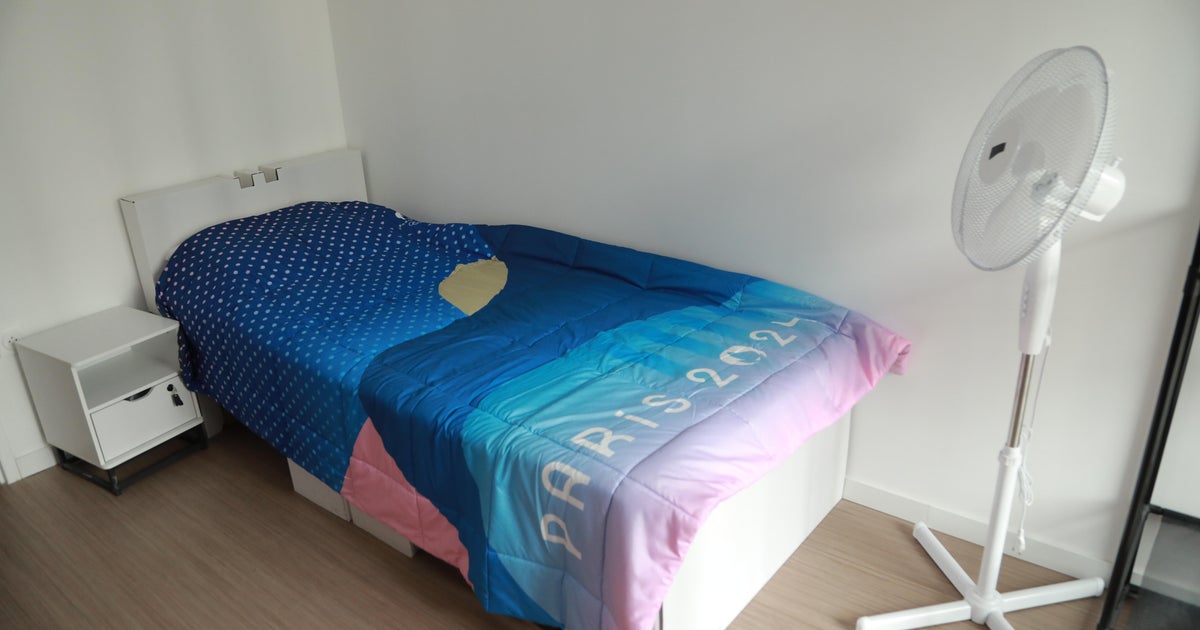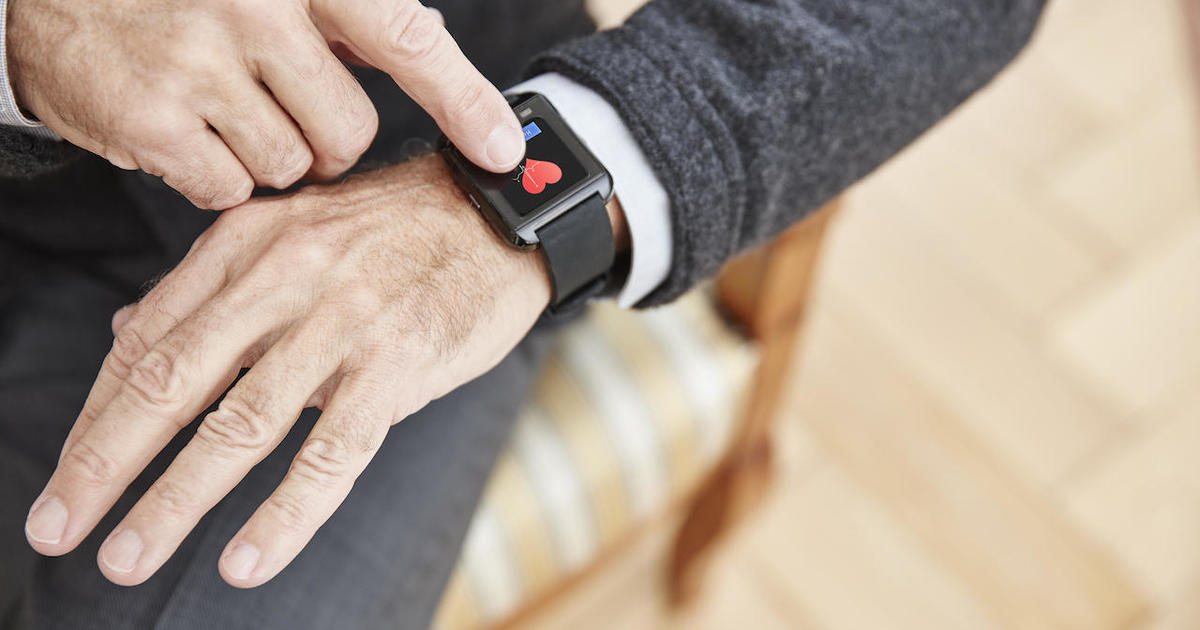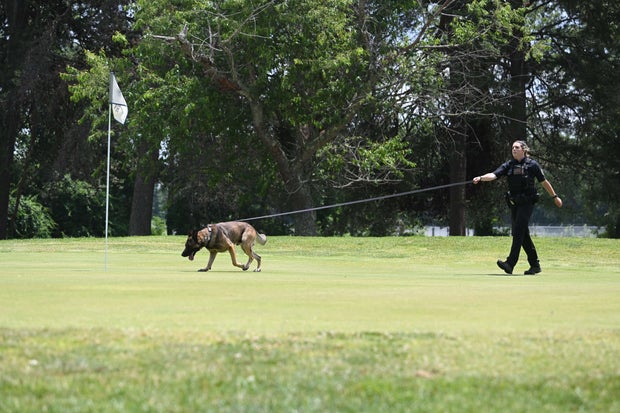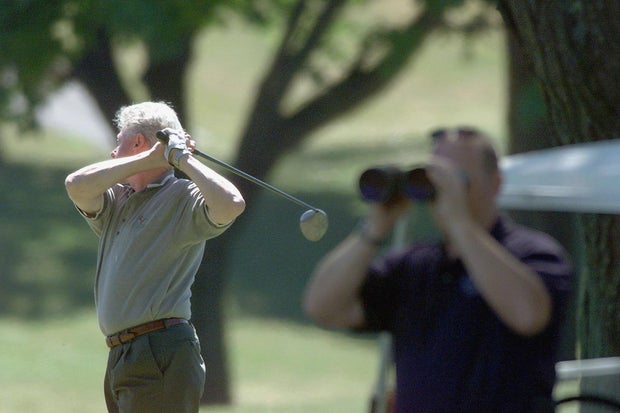CBS News
What sleeping position is best? A sleep specialist explains.

Everyone wants a good night of sleep, but your go-to sleeping position can affect how restful your night is — and how your body feels the next day.
So which position is best: side, back or stomach sleeping?
Ellen Wermter, Better Sleep Council representative, family nurse practitioner and behavioral sleep medicine specialist, told CBS News it’s more about what works for you, not which is considered the “best” position overall — though each has some pros and cons.
“As far as advantages and disadvantages, it all of it depends on how you feel the most comfortable and pain free,” she said. “In general, we’re trying to maximize a couple of things: spine alignment and breathing.”
Here’s what to know about each position:
Back sleeping
Certain sleep conditions like sleep apnea are “very positional,” Wermter said, which can make some positions — like back sleeping — worse than others.
“When you’re on your back, you have a lot of gravity working against you,” she said. “Your tongue tends to fall back, things tend to relax and you get more obstructions of the airway.”
So if you are prone to airway obstruction, it’s might not be the best option.
Back sleeping can also cause snoring, according to the National Sleep Foundation, since it can narrow your airways due to gravity.
The positive of back sleeping? It’s excellent for spine alignment.
“It keeps everything in such a nice, neutral position. And your weight is very evenly distributed when you’re on your back — those are really big pros,” she said.
Side sleeping
Side sleeping, on the other hand, is “pretty good for breathing,” Wermter said.
“The left side in particular is considered excellent for cardiovascular (circulation), the return of the blood flow — that’s why (it’s often) recommended for pregnancy as well,” she added.
Sleeping on your right side can also make heartburn and GERD — gastroesophageal reflux disease— symptoms worse, according to Johns Hopkins Medicine.
Side sleeping can also be OK for spine alignment, Wermter said, particularly when using pillows to keep things as neutral as possible.
“When you’re on your side, it’s really about filling in that little gap your neck makes,” she said. “The other piece is lining up the hips — putting a pillow between the legs is often comfortable or supporting a shoulder or an arm to keep that neutral alignment with the spine.”
Stomach sleeping
“Stomach sleeping is considered the most problematic because it is hard to get that neutral spine (and neck) position,” Wermter said. “Your face is sort of pressed into the mattress or the pillow, so you have to turn your neck to one side or the other.”
Superficially, you can also get more wrinkles from stomach sleeping because of the pressure of your face into your bed.
“So if that’s something you’re worried about, then that’s a negative for stomach sleeping,” she said.
If you’re not washing your pillowcases regularly enough, stomach sleeping can also lead to breakouts, according to Johns Hopkins.
If you do stomach sleep, Wermter suggests choosing a flatter pillow (or none at all) in order to reduce your neck from being arched back more.
What sleep position should I use?
Listening to your body is key to finding what sleep position is best for you.
“If you’re gasping awake and you’re on your back, well that’s probably not the best position for you for breathing, or if you’re on your stomach and you’re feeling the pain in your neck, that’s probably not working for you,” Wermter said.
Position preferences can also change as you age or as you deal with things like surgeries, so be open to adjusting as needed.
“You do have to adapt to what’s going on in your life or what recovery you’re currently dealing with,” Wermter said, adding she’s personally switched from her previously preferred stomach sleeping to side sleeping as she’s gotten older. “It does change over time based on how flexible you are, how stiff you get.”
While it can be really difficult to train yourself into a different sleeping position, it can be done.
“Because our brains get so used to their comfort position, it can take some time and some persistence,” she said.
Wermter also suggests using pillows to your advantage. In addition to testing out what height and size works best for your position of choice, you can also use them to prop or stabilize yourself in a particular position.
Still struggling with sleep?
If no position is leaving you rested, consider what you’re sleeping on.
“All of these positions are going to be best on a good sleeping surface. So if you’re starting with a mattress that doesn’t have good support anymore or is sagging, then even your best efforts aren’t going to be optimized,” Wermter said.
Consistent tossing and turning despite your best efforts could also mean you’re dealing with a sleep disorder, which can affect your energy level, mood, productivity and cognitive function, according to the National Sleep Foundation.
“It can also lead to more critical problems down the road, including conditions like high blood pressure, cardiovascular disease, diabetes, and stroke,” the foundation’s website states. “If you’re regularly having trouble sleeping or experiencing daytime fatigue even though you thought you slept soundly through the night, it might be time to talk to a doctor about your concerns.”
CBS News
Beirut doctor on treating injuries from device explosions as Israel-Hezbollah tensions boil over

Watch CBS News
Be the first to know
Get browser notifications for breaking news, live events, and exclusive reporting.
CBS News
Golf: The presidential pastime that’s a nightmare for the Secret Service

Before President William Howard Taft ever stepped on a golf course as commander-in-chief, he was cautioned by his predecessor to avoid the sport altogether.
“I have received hundreds of letters protesting it,” then-President Theodore Roosevelt wrote to Taft, who was his secretary of war. Roosevelt warned that photo-ops of political leaders’ leisure-time activities could damage their public image. “Photographs of me on horseback, yes. Tennis, no,” he wrote. “And golf is fatal.”
Roosevelt was speaking figuratively, but the U.S. Secret Service views presidential golfing as a literal physical threat. While former President Donald Trump was on the fairway of the fifth hole at Trump International Golf Club last Sunday in West Palm Beach last Sunday, an advance agent spotted the barrel of a rifle jutting through barbed wire fencing along the tree line bordering the sixth-hole putting green. The gunman was apprehended, and the FBI is still investigating the apparent attempt on Trump’s life — the second in about two months.
JIM WATSON/AFP via Getty Images
Secret Service agents were given little time to survey the course for threats to Trump’s safety. According to two people familiar with the events, Trump’s protective detail was given roughly a 30-minute heads-up that he would play a round at his course Sunday, sending them scrambling to accommodate the unplanned outing.
“The president wasn’t even really supposed to go there,” Acting U.S. Secret Service Director Ronald Rowe told reporters this week. “It was not on his official schedule. And so we put together a security plan, and that security plan worked.”
“Off-the-record movements”
Trump’s round of golf is what the Secret Service calls an “off the record” or unplanned movement, an outing excluded from any public schedule. It’s the kind of excursion that usually offers far less time to prepare for agents tasked with shielding a president or former president from threats. Current and former agents likened it to President Biden’s last-minute pit stops for ice cream or President Barack Obama’s unannounced visits to nearby restaurants.
TIM SLOAN/AFP via Getty Images
“But if somebody’s going to lay down a bet in Vegas on a Sunday afternoon, they may just wager that the president’s going to play golf,” offered former Secret Service Deputy Director A.T. Smith, noting that while serving as an agent on then President Bill Clinton’s detail, he used to carry around three outfits in anticipation of his weekend ritual.
“We’d pack one outfit to go running, one to go to church, and a third to play golf,” Smith recounted.
Presidential respite turns into crisis
Golf outings offer the commander-in chief a rare respite from the churning demands of the Oval Office, but for the Secret Service agents who must scan fairways and putting greens, the assignment is a nightmare.
“In a perfect world, the Secret Service would rather the protectee never leave the house,” he added. “And that includes the White House.”
That nightmare first became a reality in October of 1983, when an armed man wielding a .38 caliber pistol pummeled his truck through an unmanned security gate and rumbled into the clubhouse, holding five hostages — including two Reagan aides — while demanding to speak with the president. The Secret Service reportedly whisked Reagan off the 16th hole and into a bulletproof limousine, but not before the president phoned the clubhouse to try and negotiate with his assailant. Charles Harris served five years in jail, but no one was injured.
A presidential putting green and namesake course
Since Taft first pierced the “green curtain” more than a century ago, sixteen presidents have stepped onto a golf course while in office, with President Dwight D. Eisenhower carding more than 800 rounds, according to the USGA. The avid golfer installed a putting green on the White House grounds in 1954.
Clinton — notorious for his “mulligans” — later moved it south of the Rose Garden, a short jaunt from the Oval Office, but nixed the sand bunker at the request of the U.S. Secret Service, who feared the president might knock a wedge shot through a West Wing window, according to Golf.com.
Hum Images/Universal Images Group via Getty Images
While in office, Trump preferred his namesake golf courses. According to a count by former CBS News White House correspondent Mark Knoller, Trump played golf at his heavily trafficked club in West Palm Beach 89 times during his presidency, with frequent outings to his other courses in Sterling, Virginia, and Bedminster, New Jersey, too. The latter suffered tens of thousands of dollars in damages back in 2017, after Clifford Tillotson allegedly used chemicals to etch anti-Trump messages in the greens, first reported by Bloomberg, at the time.
The day after Sunday’s incident at his Florida course, Rowe advised Trump during a closed-door meeting that it is unsafe for the former president to keep golfing without additional security measures, a senior official with the Trump campaign confirmed to CBS News.
The protective bubble
“The Secret Service isn’t authorized to protect the former president’s golf courses 24 hours a day,” said Paul Eckloff, a former Secret Service agent and assistant detail leader for Trump, who has protected him at golf courses “dozens of times,” including at the club in West Palm Beach.
Trump’s 27-hole course, an 8-minute drive from his residence at Mar-a-Lago, features wide open spaces interspersed with rows of swaying coconut palms and a 58-foot waterfall. Those terrain features offer cover to the former president when he plays, but they also conceal potential threats, current and former agents tell CBS News.
“On a golf course, the detail needs to stay a terrain feature ahead and a terrain feature behind to create that perimeter of protection for the former president or whoever it is that we’re protecting,” said Mike Matranga, a former U.S. Secret Service agent assigned to Obama’s detail.
But while Matranga considers Sunday’s response “a win” for the agency, he added, “The Secret Service should have had a counter surveillance or additional tactical element in that wood line with a K-9 sweeping the area,” a reference to where Ryan Routh lingered in the brush for nearly 12 hours, according to evidence retrieved by the FBI from the suspect’s cell phone. Routh currently faces two firearms charges over the incident.
During his U.S. Secret Service training, Matranga ran drills simulating an attack on a protectee at the links on Andrews Air Force Base, the same golf course where he routinely accompanied Obama for weekend rounds.
After retiring from the agency, the 12-year-veteran of the U.S. Secret Service admitted he sold his clubs. “I never wanted to step foot on a golf course again.”
contributed to this report.
CBS News
Deadly flooding in West and Central Africa leaves corpses of crocodiles and snakes floating among human bodies

Houses swept away to the very last brick. Inmates frantically fleeing the city’s main prison as its walls were washed away by water rising from an overflowing dam. Corpses of crocodiles and snakes floating among human bodies on what used to be main streets.
As torrential rains across Central and West Africa have unleashed the most catastrophic floods in decades, residents of Maiduguri, the capital of the fragile Nigerian state of Borno — which has been at the center of an Islamic extremists’ insurgency — said they have seen it all.
Earlier this week, Nigerian authorities said more than 270 inmates were missing after escaping from custody when severe flooding damaged a prison in Maiduguri, CBS News partner BBC reported. Borno state Governor Babagana Zulum described the extent of the damage in the area as “beyond human imagination.”
The floods, which have killed more than 1,000 people and displaced hundreds of thousands across the region this year, have worsened existing humanitarian crises in the countries which have been impacted the most: Chad, Nigeria, Mali and Niger. Over four million people have been affected by flooding so far this year in West Africa, a threefold increase from last year, according to the U.N.
With rescue operations still underway, it is impossible to give an accurate count of lives lost in the water. So far, at least 230 were reported dead in Nigeria, 265 in Niger, 487 in Chad and 55 in Mali, which has seen the most catastrophic flooding since the 1960s.
While Africa is responsible for a small fraction of global greenhouse gas emissions, it is among the regions most vulnerable to extreme weather events, the World Meteorological Organization said earlier this month. In sub-Saharan Africa, the cost of adapting to extreme weather events is estimated between $30-50 billion annually over the next decade, the report said. It warned that up to 118 million Africans could be impacted by extreme weather by 2030.
Maiduguri, the capital of Borno state, has been under significant strain. Over the last decade, Borno has been hit by a constant string of attacks from Boko Haram militants, who want to install an Islamic state in Nigeria and have killed more than 35,000 people in the last decade.
AUDU MARTE/AFP via Getty Images
Saleh Bukar, a 28-year-old from Maiduguri, said he was woken up last week around midnight by his neighbors.
“Water is flooding everywhere!” he recalled their frantic screams in a phone interview. “They were shouting: ‘Everybody come out, everybody come out!” Older people and people with disabilities did not know what was going on, he said, and some were left behind. Those who did not wake up on time drowned right away.
Local authorities are overwhelmed by the scale of the disaster: over 600,000 people in Borno state have been displaced, while at least 100 were killed and 58 injured, according to the U.N.
Last week, floods killed about 80% of the animals at the Borno State Museum Park and an unspecified number of reptiles escaped. Ali Donbest, who runs the Sanda Kyarimi Zoo, told the BBC that he does not know exactly how many wild animals escaped the zoo but a hunt was on to locate them. He also said the cages where the lions and hyenas were kept had been submerged by floodwaters but the zoo could not determine if they had escaped.
Maiduguri resident Ishaq Sani told the BBC his biggest fear is to come across a wild animal. He abandoned his home due to the floods and is now staying with a friend in another location.
The waters also knocked down the walls of the local police station and some of the government’s offices.
Rescue operations continue 10 days later, with some parts of the city returning to normal as waters recede.
Flooding forces woman to abandon her baby
Survivors recounted chilling scenes of bodies in the floodwaters.
Aishatu Ba’agana, a mother of three, had to abandon her recently born baby as water surging over her house overwhelmed her. “I yelled for my family to help me get my child, but I don’t know if they were able to. I haven’t seen any of them since,” she said, crying at the camp where rescue workers brought her.
The flood also destroyed crucial infrastructure, including two major dikes of a dam along Lake Alau. When the dam failed, 540 billion liters of water flooded the city. Key bridges connecting Maiduguri collapsed, turning the city into a temporary river.
Governor Babagana Zulum urgently appealed for international assistance. “Our resources are stretched to the limit, and we cannot do this alone,” he said.
The World Food Program has set up kitchens providing food to the displaced in Maiduguri as well as emergency food and cash assistance to people in the most hard-hit areas. USAID said Wednesday it has provided more than $3 million in humanitarian assistance to West and Central Africa, including $1 million provided in the immediate aftermath of the floods.
But many say they were left to fend for themselves.
Floods in mostly arid Niger have impacted over 841,000 people, killing hundreds and displacing more than 400,000.
Harira Adamou, a 50-year-old single mother of six, is one of them. She said the floods destroyed her mud hut in the northern city of Agadez.
“The rooms are destroyed; the walls fell down,” she said. “It’s a big risk to live in a mud hut but we don’t have the means to build concrete ones.”
Adamou, who is unemployed and lost her husband four years ago, said she has not received any support from the state and has not had the opportunity — or the means — to relocate. She and her children are living in a temporary shelter next to their shattered hut, and fret that the torrential rains might return.
“I understood there was a change in the weather,” she said. “I have never seen a big rain like this year here in Agadez.”
In Maiduguri, 15% of the city remains underwater, according to local authorities. As forecasts predicted more rains across the region, Nigerian authorities warned earlier this week that more floods are expected.
Bukar said he kept going back to see whether the water that swallowed his home had receded, but that has not happened. He said he has not received any aid from authorities except for some food items handed out at the local school, where he is sheltering with 5,000 others.
He is trying to stay sane by helping others. Along with his friend, he helped recover 10 bodies and rescued 25 people, rowing down the streets in a canoe. He said he’s also helping out cooking meals for those that are sheltering with him.
“I am volunteering to help, but I am also a victim,” he said. “Our people need us. They need help.”
The deadly flooding comes about five months after hundreds of people in Tanzania and Kenya died after heavy rain during the region’s monsoon season.












